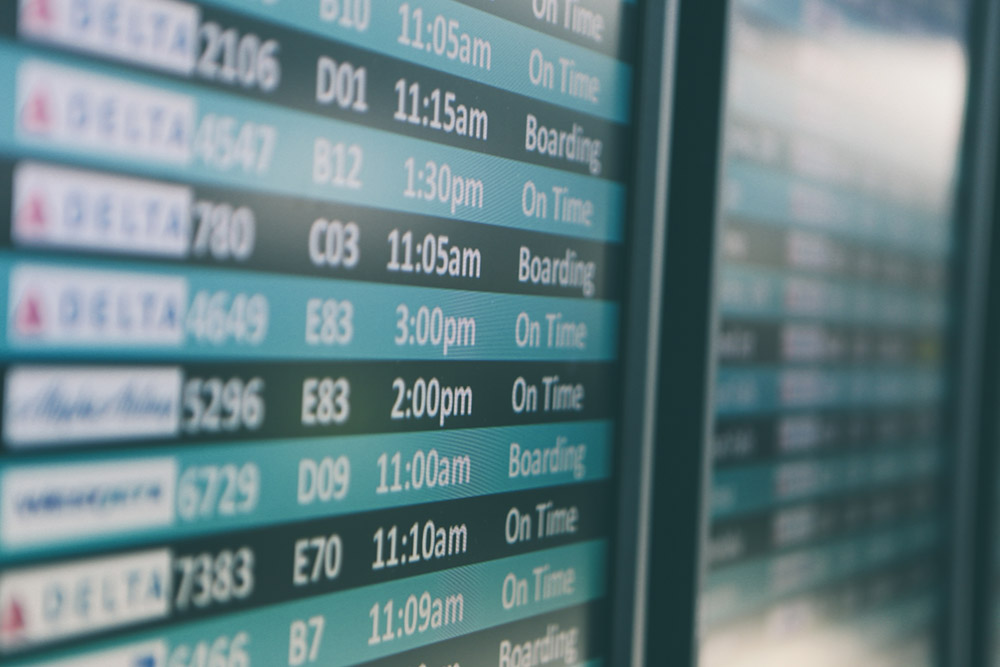To your passengers, the cleanliness of your restrooms says a lot about the overall state of the airport. It’s often the first and last facility they visit before their departure. If you’d like to make a good impression on your passengers and encourage them to fly from your airport again, get on top of the restroom cleanliness and maintenance.
DIRTY RESTROOMS WORSEN EXPERIENCES
People can become easily stressed in an airport environment. Before they even begin to get in line for check-in or security, they often have to wait to use the bathroom. And frequently it’s dirty. 2018 study by Sofidel found that 86% of Americans said that a clogged toilet would negatively impact their perception of a business.
Steve Mayers, the Customer Experience Director at Hartsfield-Jackson Atlanta International (ATL), one of Avius’ clients, indicated that passengers always refer to the cleanliness of the restrooms when talking about the cleanliness of the entire airport. This not only impacts their perception of the airport but their overall experience too.
The world’s busiest airport recognized it had to get on top of the toilet cleanliness and restocking issues in order to improve passenger experiences. Since implementing Avius’ Voice of Customer solution in 2017, ATL has improved customer satisfaction levels by over 14.5 percent.
CLEAN RESTROOMS INCREASE PASSENGER SPEND
Restroom cleanliness not only impacts passenger satisfaction but also their spending in shops and restaurants. The more time customers spend in the bathroom, the less time they have to spend money in your food and beverage or retail locations. Clean restrooms also encourage dwell time, passengers are happy to get to the airport earlier. Allowing them to linger and increase their willingness to enter restaurants and shops. As a result, they are more likely to make purchases and increase revenue.
“Passenger experience improvements create a significant improvement to the bottom line. Finding out where improvements are needed can be challenging and time-intensive – this is where Avius provides the ideal solution.” Steve Mayers, Director of Customer Engagement at Hartsfield-Jackson Atlanta International Airport.
COLLECT AND LISTEN TO FEEDBACK
By collecting passenger feedback at key touch-points, airports can improve satisfaction levels and make informed decisions on the commercial and operational areas of the business. With Avius survey kiosks, airports like ATL have been able to pinpoint exactly what the issues are, resolve them instantly, and put processes in place to limit them happening in the future. Asking passengers to press smiley faces is simply not enough. You need to find out the reasons why. Therefore, make sure you’re asking the right questions and act on the feedback you receive.
IMPROVE OPERATIONAL EFFICIENCY WITH INSTANT ALERTS
Having alerts whenever a passenger leaves negative feedback allows the relevant team to respond to maintenance and cleanliness issues in real-time. This can significantly improve passenger satisfaction and experience. Avius software provides such alerts as well as a cleaner check-in feature; the cleaning staff are able to check-in at each facility and mark how many supplies they used. Managers can use this data to manage schedules and predict when each toilet needs attention, improving operational efficiency.
 ABOUT BEN STORY
ABOUT BEN STORY
Ben Story is the CEO of Avius. Originally from the UK, he moved to Florida in 2015 to develop relationships with his American clients and further grow the business. He’s a keen sportsman and is running the Chicago marathon in October to raise money for Ronald McDonald House.


